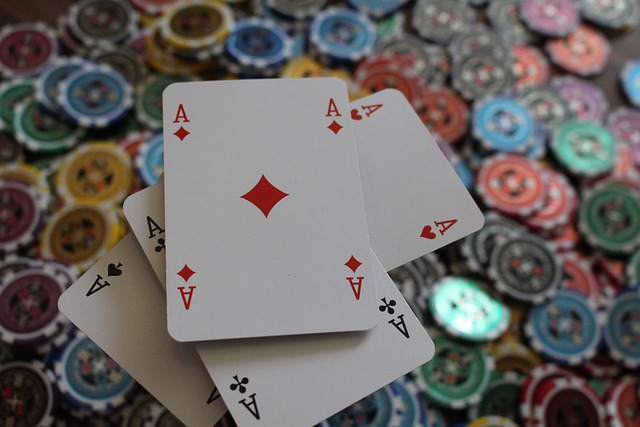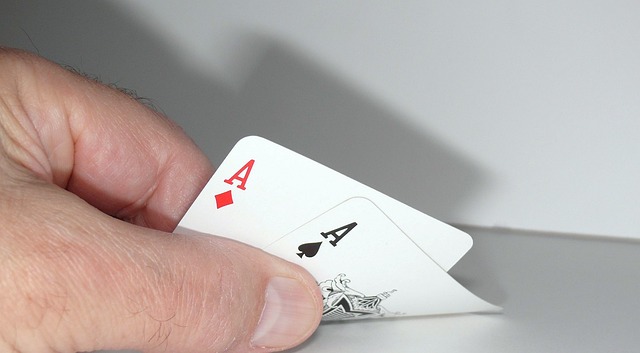Study the poker odds to take the casino by storm
Calculating the odds in poker is essential to go a step further. It is possible to win games and play at a good level without doing it, but to play the most popular card game optimally you will need to do it. If you want to know how to play, or simply know how to play well, you don’t need to read us, but if you want to develop the best possible game, you should be very attentive.
Broadly speaking, by calculating the odds in Texas holdem poker we will know how to go beyond “I have something”, “I have a monster” or “I have a project” and we will know exactly what probabilities we have of hitting the hand we want. Together with a good reading of the rival’s hands, we will have the perfect formula to have the key to victory.
Poker and odds: a practical explanation
We are going to see a very specific case in which the odds in Texas Holdem poker are of vital importance. A classic example:
- Your hand is 8-9 of clubs
- The opponent’s is A-Q of hearts. From the previous raise you sense that your opponent has a good hand
- The flop is 10-A of clubs and 7 of hearts.
- Your rival keeps going up
A novice player, or any player who does not take poker odds into account would fold the hand. And we wouldn’t blame him, since he sees that his rival has tied something superior to him. But let’s analyze it in detail. Jacks and 6s would give you a straight, just as any club would give you a flush. That means there are 17 cards that would give you a clearly superior hand, out of 47 cards left in the deck.
Taking into account that there are still two cards left to play (and that the remote combinations of two 8s, two 9s or an 8 and a 9 would also make you a winner) give you a probability of more than 55% against your opponent, assuming that they actually have the A . What does that mean? That if your reading is correct, it will be justified to match any bet, since you have more options to win than your rival. (Suppose your opponent’s hand was K-J? Or just a bluff?). Who would have thought before stopping to count Texas Holdem poker odds…
The odds in poker are not always so easy

The case we have just seen is very extreme, which would even justify an all-in in certain cases or calling a very high bet. Let’s take a tighter case. In the same hand, an A comes out which would be his set on the turn. What do we do? Is all lost? Absolutely! Our chances of winning in poker are almost 30%, because we are worth the same cards as before (excluding the option of three of a kind or two pair).
The case is somewhat more complicated. Let’s say you have to put 20 chips into a pot of 100, it would be more than justified to call your bet. Our odds are 2 to 1 (2:1), that is, for every time we win there will be two that don’t. At the same time, the pot represents odds of 5:1, which is why we should call. Put quickly, considering our chances of victory and what we must pay, we must go. It would be different if, for example, we had to pay 200 chips for a pot of 300, since the odds would be 1.5:1. In this case, the fold would be a wise decision.
Long-term gains and the psychological factor
This is where the odds in Texas holdem poker make a big difference. Intuition would lead us to discard a hand that has not yet been hit when the river is yet to come out and we suspect that the opponent has set of aces. But with the numbers in hand, the best option would be to call (always depending on the opponent’s bet). It goes without saying that in many cases we will lose, but in the long run we will win.
Assuming that the previous case (putting 20 chips to equal 100) is repeated 3 times, we would win one of them. We would have paid 60, to win 100, that is, on two (fictitious) occasions we would lose 20 (40 in total) with nothing in return, but in the long term we would win. Let’s say that it is repeated 9 times, we would pay 180 to win 300, although in 6 times we would lose for nothing.
Among many other variables, calculating poker odds makes the difference between average players and good ones. But to get the most out of this advanced game, it’s important to know how to keep a cool head. It’s okay to lose a hand, it’s okay to drop a bit from your initial stack, you may not even win all the tournaments you play. But in the long run you will win if you play like this!
Let’s get to the point… How are the odds calculated in poker?

In short, to calculate the odds in poker we must know how many cards are worth of those that are pending to come out. From there, we will multiply by the pending cards to come out, and we will multiply this number by two to know (orientatively) to know the percentage of winning. For example, if we are served a card and the turn and river remain, we have 4%, but if there is only the river left, it will be 2%. What is the probability of having a pair in poker? If we are worth 6 cards, we will have a 24% chance of hitting after the flop, but only 12% on the river. With all the cards to be discovered, that probability rises to about 50%, always taking into account that higher flushes, straights or shared cards can still come out.
How to calculate the odds in poker? In an easy way, we will multiply by four the cards that serve us if we are post-flop, with the turn or the river pending, and we will do it by 2 if only the river remains. This calculation is slightly inaccurate, since some of those cards could be in the hands of rivals, or we could win with other unexpected combinations.
Leave a Reply